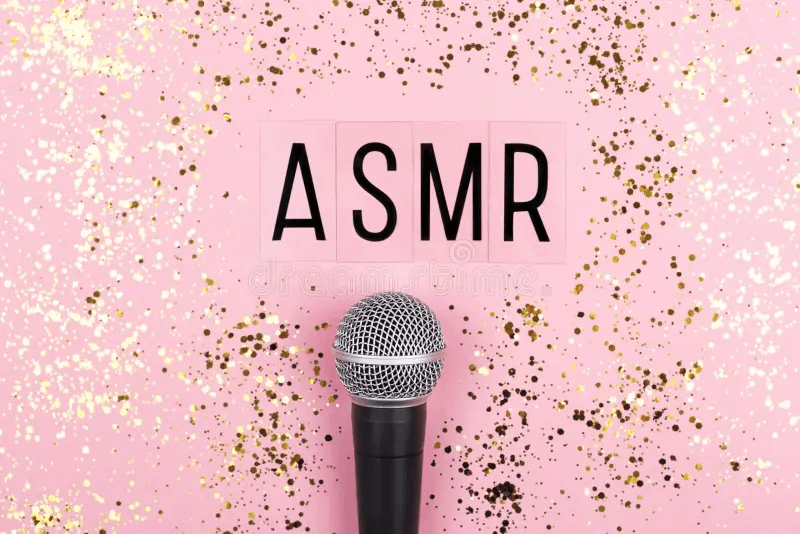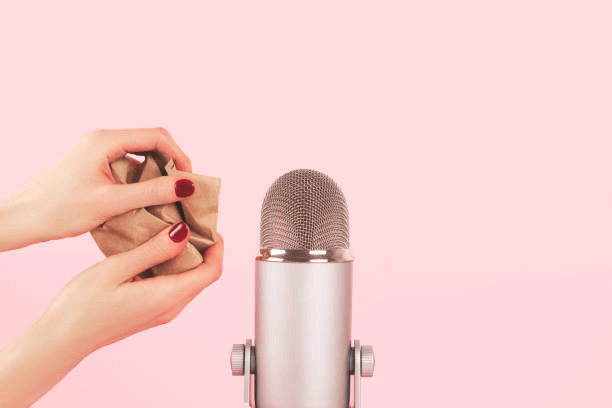ClevGuard Support: Monitor Devices with Others' Permission.

Over the last decade, ASMR has transformed from an internet niche into a mainstream trend, especially among younger users. YouTube hosts millions of ASMR videos, while TikTok is flooded with short-form content that draws massive teen audiences. What began as relaxing whispers and tapping sounds is now a full-blown cultural phenomenon.
As a parent, you may have noticed your child watching someone whisper into a microphone or chew food on camera and wondered: what's going on here? This guide will help you understand what ASMR is, why it appeals to kids, and how to set healthy limits around it.
Table of Contents
What Is ASMR?
ASMR stands for Autonomous Sensory Meridian Response—a tingling, relaxing sensation that often starts at the scalp and travels down the spine. These tingles are triggered by gentle, repetitive sounds like whispering, brushing, tapping, or crinkling. Some people describe it as a deeply calming experience, almost like a brain massage.
The term "ASMR" was coined in 2010 by a woman named Jennifer Allen, who wanted a clinical-sounding name to describe a feeling many people had but didn't fully understand. Since then, it has exploded into a global movement.
Today, millions of people—especially teens—turn to ASMR videos for stress relief, sleep support, or background ambiance. But it's important to note: not everyone experiences ASMR, and its effects aren't officially recognized by the medical community.
Why Kids and Teens Are So Drawn to ASMR
For children and teens navigating emotional changes and overstimulated digital environments, ASMR provides a sense of control and calm. Its content is typically slow-paced, gentle, and low-pressure, making it an appealing alternative to the fast-scrolling chaos of the internet.
ASMR videos come in various forms, including:
- Whispered roleplays (e.g., pretend checkups)
- "ASMR eating"—also popular in mukbang videos
- Household sounds like sweeping or organizing
- Close-up makeup tutorials or skincare routines
Many teens also use ASMR to fall asleep, replacing bedtime reading with soothing screen time. TikTok's bite-sized format has accelerated its popularity—short, relaxing clips easily go viral, encouraging repeated viewing.
However, some kids may become emotionally reliant on these videos, using them to manage stress without building real-world coping skills. For more insights into similar trends, see our article on what "chronically online" means.

Is ASMR Safe for Kids? Key Risks Parents Should Know
At its core, ASMR is not dangerous, and many viewers find it soothing or even therapeutic. However, when children and teens engage with ASMR content unsupervised or excessively, certain issues can arise—especially considering how much content is user-generated and unregulated.
Key concerns include:
Excessive screen time
Many kids use ASMR to fall asleep, which may result in hours of nightly screen exposure. This habit can interfere with melatonin production and circadian rhythm, making it harder for children to achieve quality rest.
Poor sleep hygiene
ASMR is often viewed in dark rooms, with headphones on, just before bed. While this may help some fall asleep, it can lead to reliance on screens at bedtime, which contradicts good sleep practices.
Fetishized ASMR content
Although not the norm, certain creators blur the lines between relaxing and suggestive content. Whispering, lip-smacking, and personal attention roleplays may appear innocent but could introduce sexualized undertones that are inappropriate for young audiences.
Overdependence on digital stimuli
Some children might begin to rely on ASMR videos to manage stress or negative emotions rather than learning healthy coping strategies. This can make it harder to self-regulate offline.
Algorithm-driven content spirals
Platforms like TikTok and YouTube can lead kids into endless autoplay loops. Without breaks or boundaries, children may spend hours consuming low-stimulus content that offers little intellectual or emotional engagement.
It's essential for parents to approach ASMR like any other digital trend: with a discerning eye, contextual understanding, and appropriate intervention when necessary.
How to Make ASMR a Safe and Positive Experience
Banning ASMR outright isn't necessary—especially if your child genuinely finds comfort in it. Instead, focus on creating a guided, safe, and balanced environment where your child can explore content without falling into harmful habits.
Here are some ways to do that:
Customize platform settings: Use Restricted Mode on YouTube, disable autoplay, and consider turning off personalized ads to reduce exposure to inappropriate or hyper-targeted content.
Install a parental control tool like ClevGuard's solution: Monitor your child's screen usage, block questionable apps, and establish screen-free zones during bedtime or family time.
Build trust through conversations: Ask what types of ASMR your child likes. Watch a few clips together to open dialogue about what's relaxing versus what might feel "off." This builds digital literacy and strengthens your connection.
Reinforce balance: Encourage your child to alternate ASMR time with activities that promote real-world sensory engagement, such as music lessons, art projects, physical play, or reading.
Normalize curiosity: If your child thinks ASMR is "weird" but interesting, that's OK. Let them know it's a common experience, and help them identify the difference between safe, soothing content and content that crosses age-appropriate boundaries.
By participating rather than policing, you create a space where your child can enjoy digital trends without losing their footing in the real world.
Conclusion
ASMR is a unique digital phenomenon that blends creativity, sound, and emotional comfort. For many kids and teens, it offers a moment of calm in an overstimulating world. But it's also a trend that warrants parental awareness, discussion, and boundaries.
Rather than viewing ASMR as dangerous or dismissing it as nonsense, parents should see it as an opportunity to engage. Ask questions. Learn what types of videos your child is watching. Use tools like the ClevGuard parental control tool to maintain oversight in a non-invasive way.
When approached thoughtfully, ASMR can be part of a healthy digital routine. But like any media trend, it works best when tempered with offline connection, emotional literacy, and age-appropriate boundaries.
In the ever-changing landscape of kids and tech, your attention and guidance are the most powerful tools you have.



